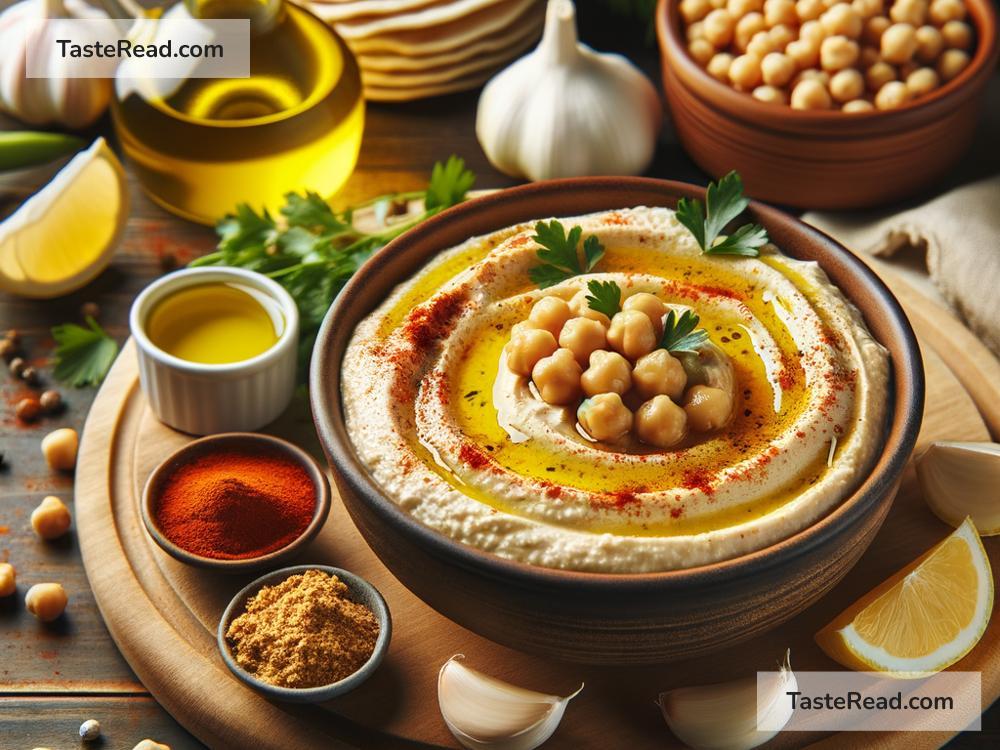How to Make Homemade Hummus: A Simple Guide
Hummus is one of those delicious, versatile snacks that can be enjoyed with a variety of foods—fresh veggies, crackers, pita bread, or even as a spread on sandwiches. The best part? It’s healthy, packed with nutrients, and incredibly easy to make at home. While store-bought hummus is convenient, nothing beats the fresh, creamy flavor of homemade hummus. Plus, by making your own, you can customize the flavors just the way you like them! In this guide, I’ll walk you through the simple steps to create hummus from scratch.
What Is Hummus?
Hummus is a Middle Eastern dip made primarily from chickpeas (also called garbanzo beans), tahini (a paste made from sesame seeds), olive oil, garlic, lemon juice, and spices. It’s known for its smooth, creamy texture and mildly nutty, tangy flavor.
The best thing about hummus is that it’s both satisfying and nutritious. Chickpeas are rich in protein, fiber, and essential vitamins, while tahini and olive oil add healthy fats that are good for your body. It’s also naturally vegan and gluten-free!
Why Make Hummus at Home?
Sure, you can grab a tub of hummus from the store, but making it yourself has major advantages:
- Freshness: Homemade hummus tastes fresher and has a creamier texture than store-bought varieties.
- Cost-effective: It’s cheaper to make hummus at home using pantry staples like canned chickpeas and olive oil.
- Customizable: Want it lemony, spicy, or extra garlicky? When you make it yourself, you can adjust the flavors to suit your taste.
- Free from additives: Store-bought hummus sometimes contains preservatives or added sugars. Homemade hummus is as clean and natural as it gets.
What You’ll Need
Before you dive into making hummus, gather the following ingredients:
Ingredients:
- 1 can (15 ounces) of chickpeas (or 1 ½ cups cooked chickpeas)
- 2–3 tablespoons tahini
- 2–3 tablespoons olive oil (extra virgin is best)
- 2–3 tablespoons fresh lemon juice (about 1 lemon)
- 1–2 cloves garlic (raw or roasted, depending on your preference)
- ½ teaspoon ground cumin (optional)
- ½ teaspoon salt (or to taste)
- Water (as needed for consistency)
Optional Add-ins:
- Paprika or chili powder (if you like it spicy)
- Fresh herbs like parsley or cilantro
- Roasted red peppers, sun-dried tomatoes, or caramelized onions for flavor variations
Tools:
- A food processor or blender
- Measuring spoons and cups
- A spatula for scraping
Step-by-Step Guide to Making Hummus
Step 1: Prep Your Chickpeas
If you’re using canned chickpeas, drain and rinse them well. Rinsing gets rid of excess salt and helps freshen them up. For smoother hummus, you can peel the chickpeas by pinching off the outer skins. While this step isn’t necessary, it can make your hummus extra creamy.
If you’re using dried chickpeas, soak and cook them beforehand. Boil them until they’re tender, which is usually about 1–1.5 hours.
Step 2: Blend the Ingredients
Add your chickpeas to a food processor or blender. Then, add tahini, olive oil, lemon juice, garlic, and salt. Don’t worry about getting the proportions perfect on the first try—you can tweak the flavors later. Pulse the mixture until it starts forming into a thick paste.
Step 3: Adjust Consistency
Hummus can be thick or smooth, depending on your preference. Add 2–4 tablespoons of water, a little at a time, and blend until you reach your desired consistency. Start with less water if you’re aiming for a thicker dip, or add more if you want it creamier and smoother.
Step 4: Taste and Tweak
This step is where you make the hummus truly yours. Taste the mixture and adjust flavors. Need more tang? Add a splash of lemon juice. Want it richer and nuttier? Add more tahini or olive oil. Prefer extra garlic or cumin? Toss them in! Blend again after each adjustment.
Step 5: Serve and Enjoy
Once your hummus is smooth and flavorful, transfer it to a serving bowl. Use the back of a spoon to create swirls on the surface, then drizzle with olive oil for a gourmet look. Sprinkle paprika or fresh herbs like parsley on top for added flair.
Ways to Enjoy Hummus
Your homemade hummus is ready to steal the spotlight! Here are a few ways to serve it:
– Dip it with raw veggies like carrot sticks, cucumber slices, or bell peppers.
– Pair it with pita bread, tortilla chips, or crackers.
– Spread it on sandwiches or wraps for a creamy, flavorful layer.
– Use it as a salad dressing by thinning it out with water or olive oil.
Tips for Success
- Use quality olive oil and tahini for the best flavor.
- Experiment with flavors: Try roasted garlic, spicy harissa, or smoky paprika for creative variations.
- Store leftovers: Keep hummus in an airtight container in the refrigerator for up to 5 days.
Final Thoughts
Making hummus at home is easy, fun, and rewarding. With just a handful of ingredients and a few simple steps, you can create a dip that is healthier, tastier, and more personalized than anything you’ll find in a store. Whether you’re hosting a party or simply snacking at home, homemade hummus is always a crowd-pleaser. So, grab your chickpeas and blender, and give it a try—you’ll never go back to store-bought again!
Enjoy your homemade hummus adventure, and happy snacking!


